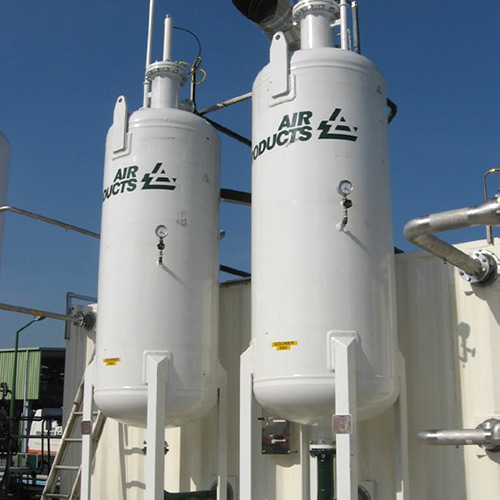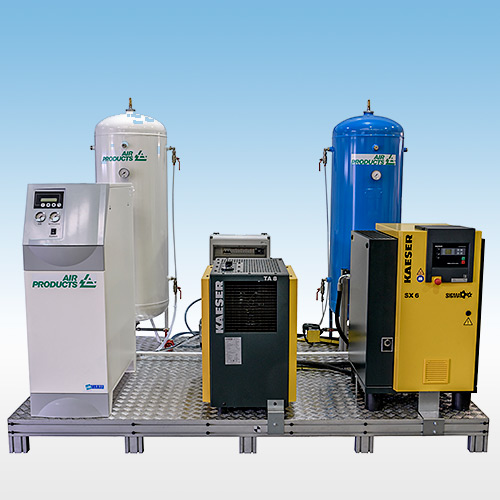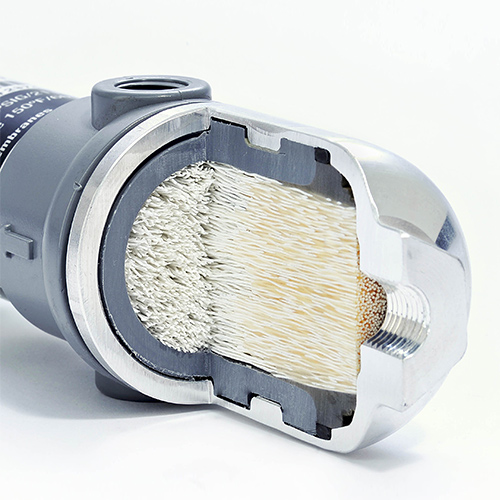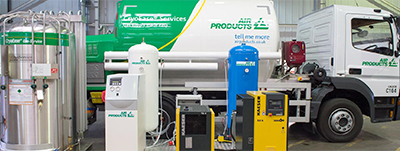Cryogenic
Air Products provides plants that are able to make liquid nitrogen in addition to the primary gaseous nitrogen, which provides a backup for certain customer requirements.
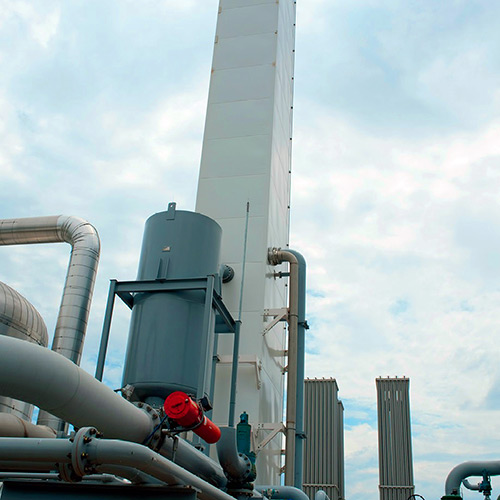
PRISM® Cryogenic Nitrogen Generators – HN Series
The highest-purity nitrogen gas produced at large flowrates using Air Products’ proprietary cryogenic separation technology, and liquid nitrogen can also be produced.
| Purity: |
1ppb oxygen |
| Flowrate: |
up to 11,000 Nm3/ hour |
→ Download PDF
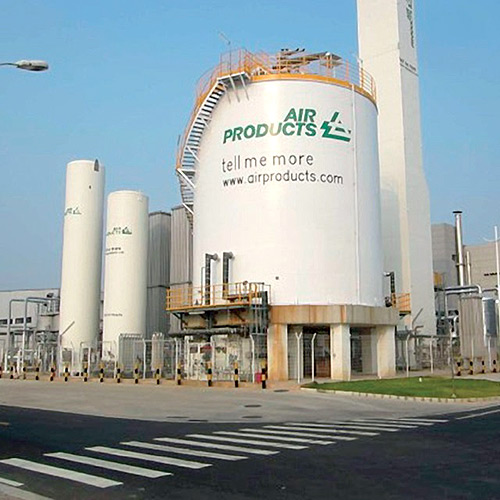
PRISM® Cryogenic Nitrogen Generators – TN Series
High-purity nitrogen gas produced at the very largest flowrates, to cover a comprehensive array of applications.
| Purity: |
from 5ppm to less than 100ppb oxygen |
| Flowrate: |
up to 55,000 Nm3/ hour |
→ Download PDF
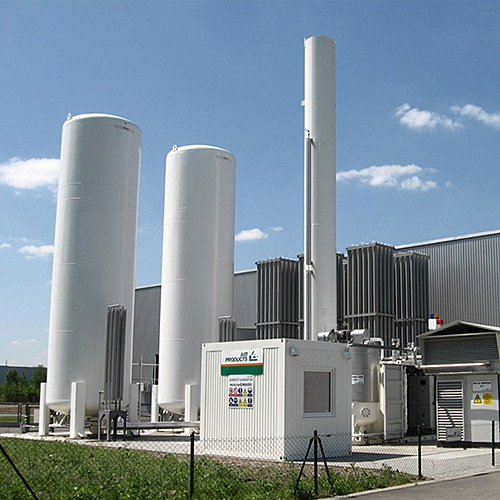
PRISM® Cryogenic HPN and GN Nitrogen Generators
Large volumes of high-purity nitrogen gas produced cost-effectively, with maximum reliability and minimal maintenance.
| Purity: |
≥ 99.99999% with oxygen impurities at the ppb level |
| Flowrate: |
up to 4,000 Nm3/ hour |
→ Download PDF
How the cryogenic nitrogen generator works?
Atmospheric air is compressed in the main air compressor of the nitrogen generator system and cooled in the compressor aftercooler. The air then passes through a pretreatment system to remove water vapor, carbon dioxide, and hydrocarbons. Inside the vacuum can, the air is cooled and partially liquefied by exchange against outgoing process streams in the main heat exchanger. The cold, partially liquefied air and gas mixture passes into the distillation column. Here the mixture is separated by distillation into nitrogen gas and oxygen-enriched liquid.




